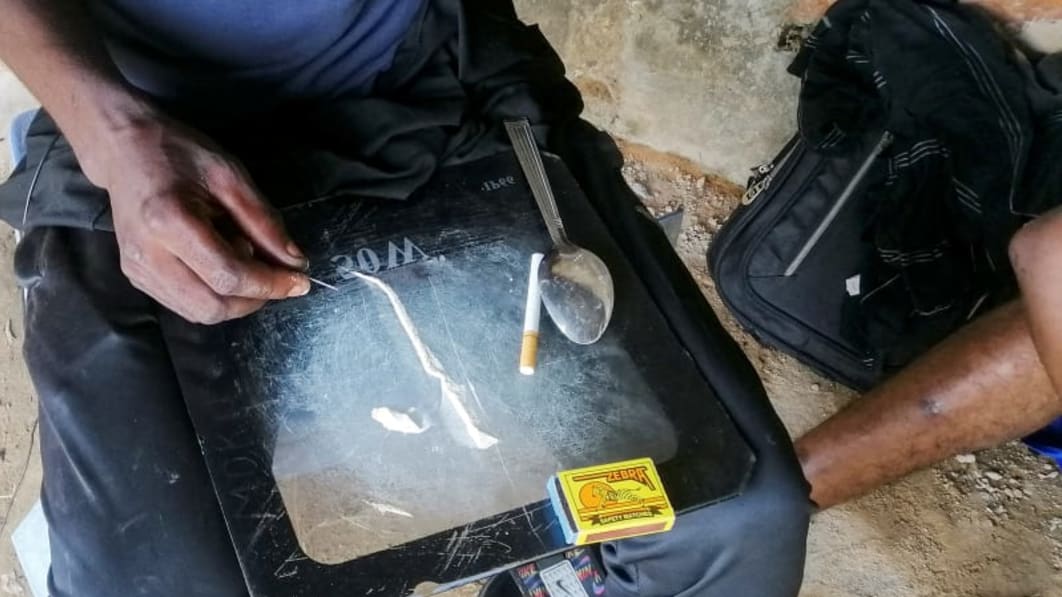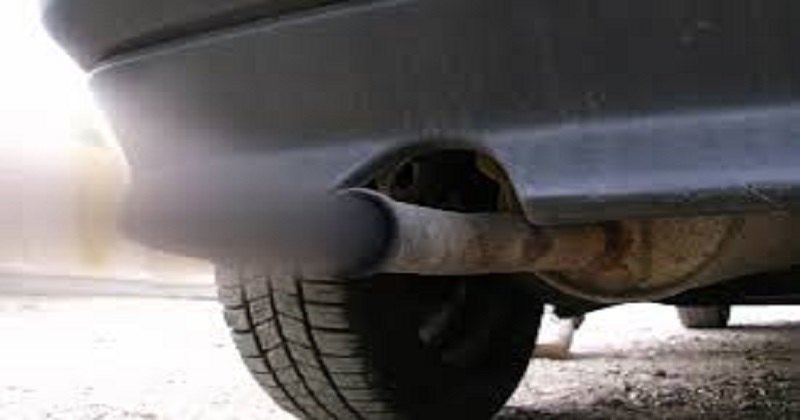Catalytic converter theft quadruples in one year
By Conor Skelding
New York Post
October 23, 2021
 Theft of catalytic converters is off the charts in the city, according to the NYPD
Theft of catalytic converters is off the charts in the city, according to the NYPD
These criminals better not let the tree-huggers catch them.
Sawzall-wielding thieves hacking away at parked cars sent thefts of a key pollution-cleaning part through the roof in the past year.
Through Oct. 10, 2,170 catalytic converters were reported stolen in the five boroughs, more than four times the 501 ripped off through the same date in 2020, the NYPD said.
“The whole process takes under two minutes,” Detective Thomas Kelly of the Auto Crimes Unit told The Post.

All it took was a couple of minutes with a reciprocating saw and another catalytic converter is gone
Catalytic converters, part of a car’s exhaust system, break down some of the smog that would otherwise come out the tailpipe.
They’re a thief magnet because they include rare metals like rhodium, palladium and platinum, which trade for four and five figures per ounce. Converters typically include 3 to 7 grams of these precious metals, Ryan Lockwood, a Carparts.com executive, told the Post.
Thieves will take the parts to smelters or scrapyards or sell them on the black market. They can cost thousands to replace.
Toyota Priuses are particular targets because they have up to three “cats,” depending on the model year, and because low-emission vehicle parts are often in better condition. Honda’s CRV crossover is another common target, according to State Farm.
Auto Crimes Detective Thomas Burke said it’s a tough crime to solve, because it’s impossible to trace a cat once it’s removed. He collared one habitual thief who targeted Ford Econoline vans in Long Island City by luck.
The crook would ride around the neighborhood on a bike with a reciprocating saw, hit a van, throw the part in his backpack and ride off. Cops caught him on surveillance video, and were able to identify him. “Should he have been stopped two blocks away, not a lot could have been done,” Kelly said.
Burke is starting a program funded by the city’s Police Foundation to label catalytic converters with serial numbers so they can be traced.
One youngish Brooklynite, who asked not to be identified, said his girlfriend’s “old” Prius fell victim over the summer. “We went to move for alternate side parking, started it up, and it sounded like a monster truck,” he said.
TIPS TO AVOID FALLING VICTIM:
- Garage your car.
- Avoid leaving your car parked street-parked for extended periods, especially in dim areas without cameras.
- Consider investing in a “cat shield.”
- Inscribe your VIN on the converter.
- Consider theft coverage.
________________
Congo’s capital is alarmed by an exhaust drug craze
East Coast Daily
September 27, 2021

A man shows a substance known as “bombe”, a mix of catalytic converters’ crushed honeycomb and pills, before snorting it, in Kinshasa, Democratic Republic of the Congo August 31, 2021.
Kinshasa’s authorities are rattling with a new craze for a drug derived from crushed vehicle exhaust filters, triggering a campaign to stop the trend. The campaign coincides with a rise in car part thefts. Following a call from DRC President Felix Tshisekedi, police rounded up and paraded nearly 100 dealers and users of the drug ‘bombe,’ which means powerful in the local Lingala language. As Tshisekedi noted at a weekly meeting of ministers, ‘this social phenomenon demands the collective responsibility of everyone in the country’.

One young man seeks oblivion in an abandoned shack in Kinshasa, where he slits open a bag of brown powder and blends it with crushed pills, before snorting the ‘bombe’ mixture with friends. A few minutes later, the trio sways slowly, scratching themselves in a catatonic state that experts in Congo claim can cause people to stand motionless for hours or sleep for days. In a white designer shirt, 26-year-old Cedrick explained that the gang used to drink whiskey very heavily and hurt people. ‘When you use bombe, you relax, you feel tired, and you stay standing or sitting for a long time. You can then go home without bothering anyone’, he said.
Police, drug experts, and car owners are not so sanguine. The brown powder is obtained by crushing the ceramic honeycomb core of automotive catalytic converters, the device that reduces toxic gas emissions from vehicle exhaust pipes. Rising drug demand is attributed by mechanics to the theft of platinum, palladium, and rhodium-coated catalytic converters. Every day, five to ten clients come to Kinshasa mechanic Tresore Kadogo with the same problem.
Kadogo said they checked underneath the car and the catalytic converter
had already been removed. It’s being used with vitamin pills, sleeping
tablets, sedatives and tobacco, but little is known about how it works
or the long-term effects, said Dandy Yela Y’Olemba, country director of
the World Federation against Drugs. Yela warned that metals in catalytic
converters can cause cancer. Yela said that the substance is not made
for consumption.
1 comment:
Nobody is going to crawl under their vehicle and etch a 17 digit VIN on C-Converter. That's why people carry insurance.
Post a Comment